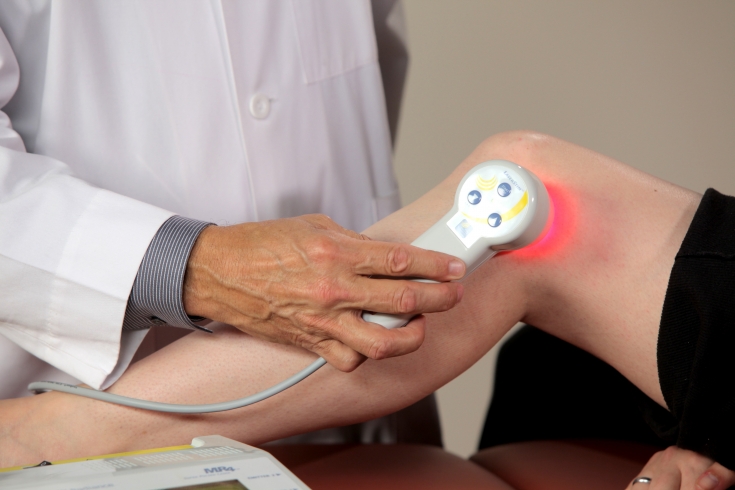Do you think that rheumatism and joint pain — Is this for the elderly? Well, among them, this common disease is indeed more common, but mature age is not the root cause of the onset of rheumatism. Alas, among young people in the prime of life, this insidious disease is also quite common, significantly lowering the quality of life.
What to do in order not to get rheumatism? Is there any prevention of the disease? What causes this disease? What are the typical symptoms associated with rheumatism? How to diagnose and treat it? Look for answers to all these questions in the article estet-portal.com.
Treatment of rheumatism of the joints: diagnosis, symptoms and treatment
First, let's understand the symptoms, diagnosis and treatment rheumatism of the joints.
Although joint pain is considered the main symptom of rheumatism, it is not really the joints that cause the pain. Rheumatism is an acute inflammatory process in the connective tissue of the musculoskeletal and cardiovascular systems. It is because of the location of the source of inflammation that pain is localized in the joints and heart.
The main culprit for this disease is a previous streptococcal infection.
Also among the causes of rheumatism may be:
- Immune pathologies.
- Frequent sore throats, tonsillitis and pharyngitis.
- Lymphadenitis.
- Hereditary factor (if first-degree relatives suffered from this disease, the risk for heirs is also high).
In addition, it is believed that entering the risk group significantly increases childhood and adolescence (when the body and the immune system are not fully formed, there is a high risk that the body will not be able to cope with the onset of the disease) and the tendency to allergic reactions, which, is also known to be caused by defects in the body's immune system. By the way, according to statistics, women suffer from rheumatism more often than men.
Some modern doctors believe that rheumatism — one of those ailments that generates a strong acidification of the body.
Rheumatism of the joints can manifest itself as early as a few weeks after the patient has suffered a throat infection — tonsillitis, for example (if the path of inflammation of the connective tissue was just that). It is easy to confuse them with signs of a returned acute respiratory disease — fever, general weakness, aching joints.
Next, more specific symptoms begin, which should make the patient suspect that something was wrong and immediately go to the doctors.
Among the symptoms of rheumatism of the joints:
- Swelling around the joints.
- Pain in the elbows, knees, feet, which periodically passes and then returns again.
- Pain in the heart.
- Irregular heart rhythm and pulse.
- Shortness of breath.
- Sweating.
In severe and advanced cases, heart disease begins to develop, the joints gradually deform, the patient's speech becomes slurred, handwriting worsens, involuntary contractions and twitches of the facial muscles, neck, limbs and the entire body begin to occur.
If there is even the slightest suspicion of a disease (even if not all the symptoms matched, but you are at risk), do not hesitate to contact the doctors! The sooner the treatment of an insidious disease begins, the less irreparable damage it will cause to the body.
The disease is diagnosed by a rheumatologist, to whom the patient is usually referred by a general practitioner. The diagnosis is made after an extensive comprehensive examination.
It includes:
- blood tests (clinical and immunological);
- ECG (electrocardiography of the heart);
- X-ray examinations of the joints (X-ray, MRI or CT).
 Treatment of rheumatism of the joints: how to help yourself
Treatment of rheumatism of the joints: how to help yourself
antibiotics (usually the penicillin series);
- non-steroidal anti-inflammatory drugs (they relieve pain at the same time);
- glucocorticoids;
- immunostimulating drugs.
- If the joints are very affected by inflammation, then some drugs are injected directly into them. In case of acute pain in the active phase, bed rest is needed.
The inpatient stage of treatment of the active phase of the disease usually lasts 1-1.5 months, then the patient is strongly recommended to undergo rehabilitation in a sanatorium or medical resort.
You will have to be observed by a rheumatologist after a disease for the rest of your life and periodically take preventive measures to avoid relapses. proper rest), do not neglect the rules of personal hygiene, try to avoid contact with people carrying streptococcal infections, treat infectious and viral diseases immediately after the onset, do not let the acute respiratory infections take their course, listening to medical recommendations, try not to overcool.
Of course, even following the rules of prevention — not a panacea for the disease if you are at risk, but everyone can increase their chances of avoiding the disease on their own. Health to you!
Read also:






Add a comment